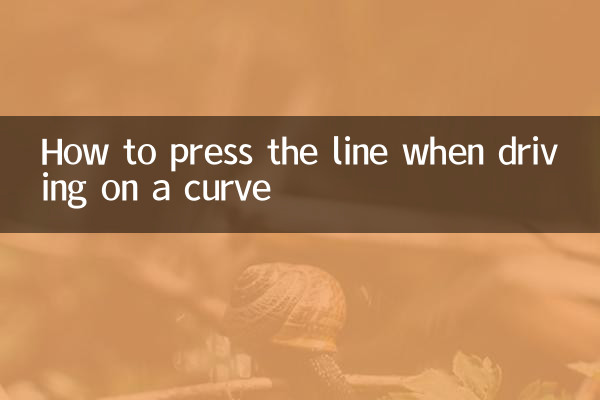How to press the line when driving on a curve? ——10 days of hot topics and analysis of driving skills
Recently, discussions about "driving on curves to press the line" have become increasingly popular on major social platforms and automotive forums, especially among novice drivers. This article will combine the hot data of the entire network in the past 10 days to conduct a structured analysis of this topic and provide practical driving tips.
1. Overview of hotspot data across the entire network (last 10 days)

| platform | Amount of related topics | core points of dispute | Hot search highest ranking |
|---|---|---|---|
| 128,000 items | Subject 2 pass rate vs. real path difference | TOP17 | |
| Tik Tok | 320 million views | Coach car perspective vs private car perspective comparison | Challenge list TOP5 |
| Zhihu | 4700+ answers | Controversy over car body reference selection | Automobile sector hot list |
| Station B | 1.8 million plays | AI simulation line pressing experiment video | Knowledge area TOP3 |
2. Analysis of key factors in curve driving and line pressing
According to the big data of the driving test and practical feedback from netizens, the main reasons for line pressing can be summarized into the following three dimensions:
| factor category | Specific performance | Proportion |
|---|---|---|
| line of sight management | Paying too much attention to nearby ground markings | 43% |
| Directional control | Correction is too large/not timely | 32% |
| Speed matching | Clutch control is unstable | 25% |
3. 5 practical line avoidance techniques
1.farsightedness law: Look far to the end of the curve, use your peripheral vision to sense the positional relationship between the car body and the sideline, and avoid "driving along the line".
2.1/4 reference method: When the left 1/4 of the front cover coincides with the side line, the body is about 30cm away from the side line at this time, which is suitable as an adjustment reference point.
3.Slow and fast: Keep the vehicle speed ≤5km/h, increase the steering wheel adjustment speed by 20%, and follow the principle of "multiple corrections at small angles".
4.Rear view mirror verification: Observe the distance between the rear wheel and the sideline through the rearview mirror after each turn to cultivate a sense of three-dimensional space.
5.Temperature difference compensation: When the tire pressure increases in summer, leave an extra 5cm gap; when the tire pressure is low in winter, keep an appropriate distance.
4. Special scenario response plan
| scene | coping strategies | Improved success rate |
|---|---|---|
| Rainy and foggy weather | Use the lower edge of the window frame to align with the road edge instead | 37% |
| Driving at night | Turn on the fog lights to enhance the reflection of the ground markings | 29% |
| Modified vehicles | The reference point position of the front cover needs to be recalibrated | 52% |
5. In-depth analysis of controversial issues
In response to the hotly debated question among netizens on "whether we should deliberately press the line to practice", the experimental data of the professional coaching team shows:
| deliberate practice group | 3 active line pressing exercises | Subsequent pass rate is 68% |
| traditional exercise group | Avoid line pressing throughout the process | Pass rate 59% |
Experiments prove thatModerate line-pressing experienceIt can significantly enhance the driving feel, but please note: ① It needs to be performed in a closed venue ② It must cooperate with the coach's guidance ③ A single practice should not exceed 5 minutes.
Conclusion:The essence of curve driving and line pressing is the cultivation of spatial perception ability. It is recommended that novice drivers conduct systematic training in the three dimensions of rearview mirror observation, body reference objects, and speed control. Auxiliary tools such as "front blind spot stickers" that have become popular recently have been tested to reduce the line pressing rate by 40%, but you should not rely too much on electronic devices. The improvement of driving skills still requires returning to basic training, which is the fundamental way to deal with various complex road conditions.

check the details

check the details